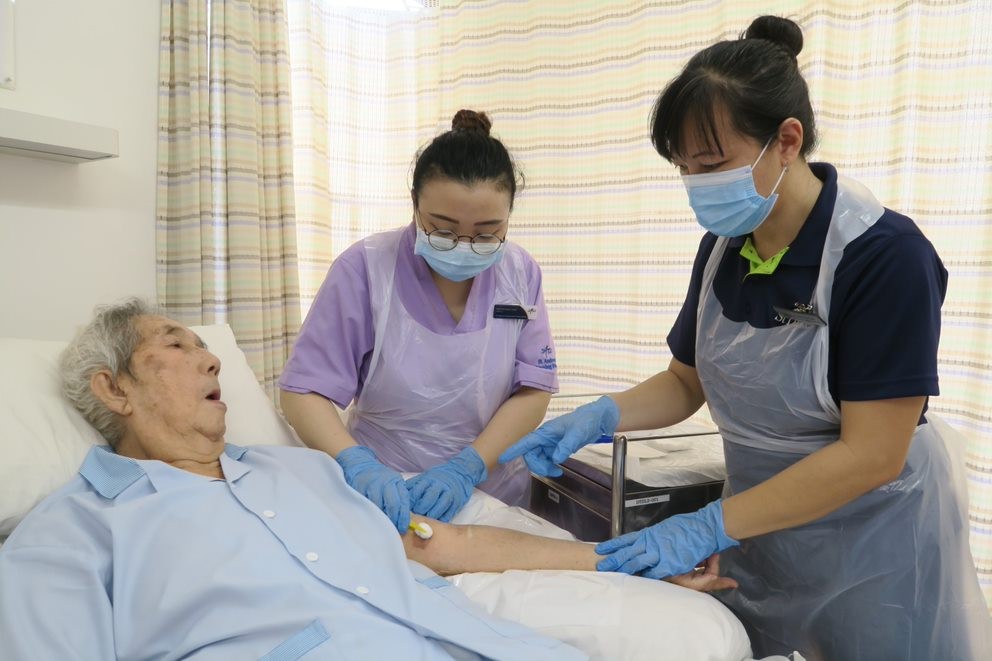Introduction
Wound treatment monitoring is an essential aspect of medical care, particularly in the treatment of persistent wounds and intricate injuries. Whether it's an easy cut or a more complicated abscess, efficient injury management can considerably influence recovery results. Proper techniques not only accelerate recuperation yet also minimize the risk of infection and issues. As healthcare professionals, recognizing these approaches is vital. In this post, we dig deep right into Wound Treatment Monitoring: Techniques for Successful Outcomes, including different facets such as training for professionals, nursing education, and advanced methods for handling complex wounds.
1. Understanding Wound Treatment Management
1.1 What is Wound Treatment Management?
Wound care management describes the methodical approach to dealing with injuries with proper evaluation, diagnosis, and treatment procedures. It consists of everything from cleaning and dressing wounds to monitoring healing progress.
1.2 Significance of Wound Care
Effective injury treatment is critical since it assists prevent infections, promotes quicker recovery, and inevitably decreases health care prices connected with long term treatments.
2. Types of Wounds
2.1 Severe Wounds
Acute injuries are those that recover rapidly without problems. They normally result from surgical treatment or unexpected injuries.
2.2 Persistent Wounds
Chronic injuries continue gradually and are frequently related to underlying problems such as diabetes or vascular disease.
3. The Role of an Injury Treatment Specialist
3.1 What Does an Injury Treatment Specialist Do?
A wound treatment expert focuses on detecting and treating various sorts of wounds using specialized knowledge and techniques.

3.2 Training Required for Specialists
To end up being an injury care specialist, one have to go through extensive training that consists of both academic knowledge and functional skills.
4. Wound Care Expert Training
4.1 Introduction of Educating Programs
Training programs for wound care specialists differ commonly but typically consist of coursework on composition, physiology, and the most up to date wound treatment technologies.
4.2 Accreditation Options Available
Various organizations offer accreditations in wound care management that boost credibility and experience in the field.
5. Wound Treatment Educating for Nurses
5.1 Relevance of Specialized Training
Nurses play an essential function in person care; therefore, specialized training in injury administration is essential for delivering quality medical care services.
5.2 Curriculum Parts in Nursing Programs
Most nursing programs now include components focused on basic wound care training to outfit registered nurses with essential abilities called for in professional settings.
6. Wound Care Training Courses
6.1 Online vs On-site Courses
With the surge of electronic understanding systems, several professionals are opting for on the internet wound care training courses that use flexibility without compromising on quality.
6.2 Training course Content Overview
Typical training course material consists of composition appropriate to wound healing, ideal techniques in clothing application, infection control measures, among others.
7. Basic Wound Care Training Essentials
7.1 Secret Abilities Acquired Via Standard Training
Basic wound care training outfits people with skills like cleaning strategies, applying dressings appropriately, and recognizing indications of basic wound care training infection.
7.2 Value of Hands-on Practice
Theory alone isn't sufficient; hands-on technique is crucial for developing self-confidence and efficiency in managing injuries effectively.
8. Advanced Methods in Intricate Wound Care
8.1 Recognizing Intricate Wounds
Complex injuries call for specialized treatments due to their nature-- often including deeper cells or underlying health and wellness problems that prevent recovery processes.
8.2 Therapy Modalities
Advanced techniques include adverse stress wound therapy (NPWT), bioengineered tissues, and other ingenious strategies customized to promote recovery in complicated cases.
9. Chronic Wound Care Management Strategies
9.1 Identifying Underlying Causes
Identifying the origin of chronic injuries-- be it bad circulation or diabetic issues-- is important for reliable therapy plans.
9.2 Multidisciplinary Approach
An effective chronic injury monitoring approach usually entails partnership among numerous healthcare providers consisting of dietitians, podiatric doctors, and physical therapists.
10. The NDIS (National Handicap Insurance Coverage Scheme) & Wound Care
10.1 NDIS Assistance Services
For people under the NDIS structure requiring ongoing injury monitoring assistance solutions are crucial to ensure they obtain ideal treatment tailored to their needs.
10.2 Funding Options Available
Understanding financing choices readily available through NDIS permits patients to gain access to required treatments without financial burden.

Frequently Asked Inquiries (FAQs)
Q1: What certifications do I require to end up being a wound care nurse?
A: Usually needs a nursing degree together with specialized accreditation in injury management acquired with recognized programs or training courses concentrated on nursing wound treatment training.
Q2: How long does it require to complete a wound care training course?
A: Course duration varies; nonetheless, lots of on the internet programs can be completed within several weeks while comprehensive accreditation programs may take months depending upon deepness and routine flexibility.
Q3: Can I handle my own chronic wounds at home?
A: While some individuals can manage small persistent wounds at home with appropriate education and learning from healthcare providers, severe cases should always be examined by specialists to prevent complications.
Q4: Why is infection control crucial in wound management?
A: Infection control avoids difficulties that can occur from neglected infections which might delay recovery or lead to more severe health and wellness problems requiring extensive clinical intervention.
Q5: Are there particular items advised for persistent injury management?
A: Yes! The choice of items depends upon the type of persistent wound; common choices consist of hydrocolloid dressings, alginates, foam dressings etc, customized based on private needs assessed by health care providers.
Q6: Is there ongoing education available after initial certification?

Conclusion
In final thought, effective Wound Treatment Monitoring: Techniques for Successful Outcomes depend heavily on proficient specialists that recognize both fundamental principles and progressed techniques vital for promoting optimal recovery conditions across diverse patient populations-- from severe injuries needing instant attention to intricate persistent wounds calling for continuous analysis and treatment techniques customized towards all natural health goals. By prioritizing education and learning through detailed training programs developed specifically around progressing standards within this vibrant field-- medical care specialists can boost their capability supplying outstanding solution while making certain positive client experiences producing successful results over time.